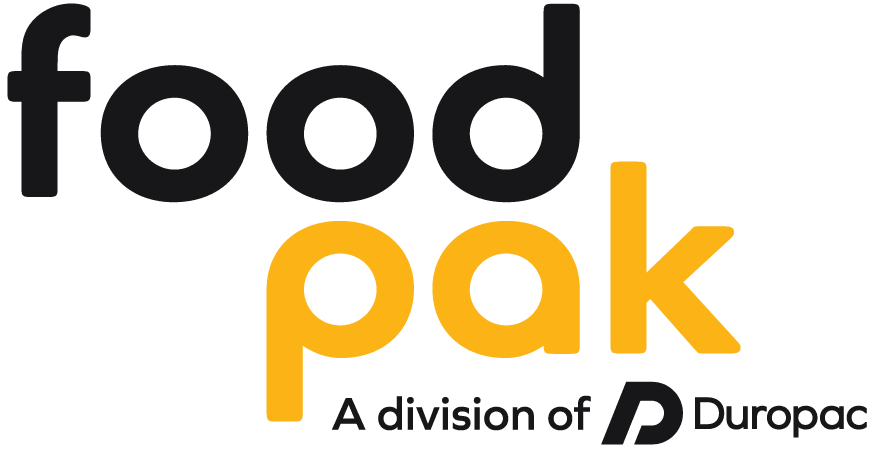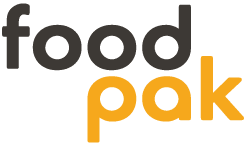Key elements of Canadian food packaging
Taking your food product to retail shelves in Canada is an exciting venture, but it comes with a unique set of requirements and regulations. From mandatory labeling components to securing a UPC code, we’ll cover the basics that you’ll need to know to ensure your product is retail-ready and compliant with Canadian standards.
To successfully launch your food product in Canada, your packaging must adhere to specific regulations set by the Canadian Food Inspection Agency (CFIA) and Health Canada. Here’s a breakdown of the essential components:
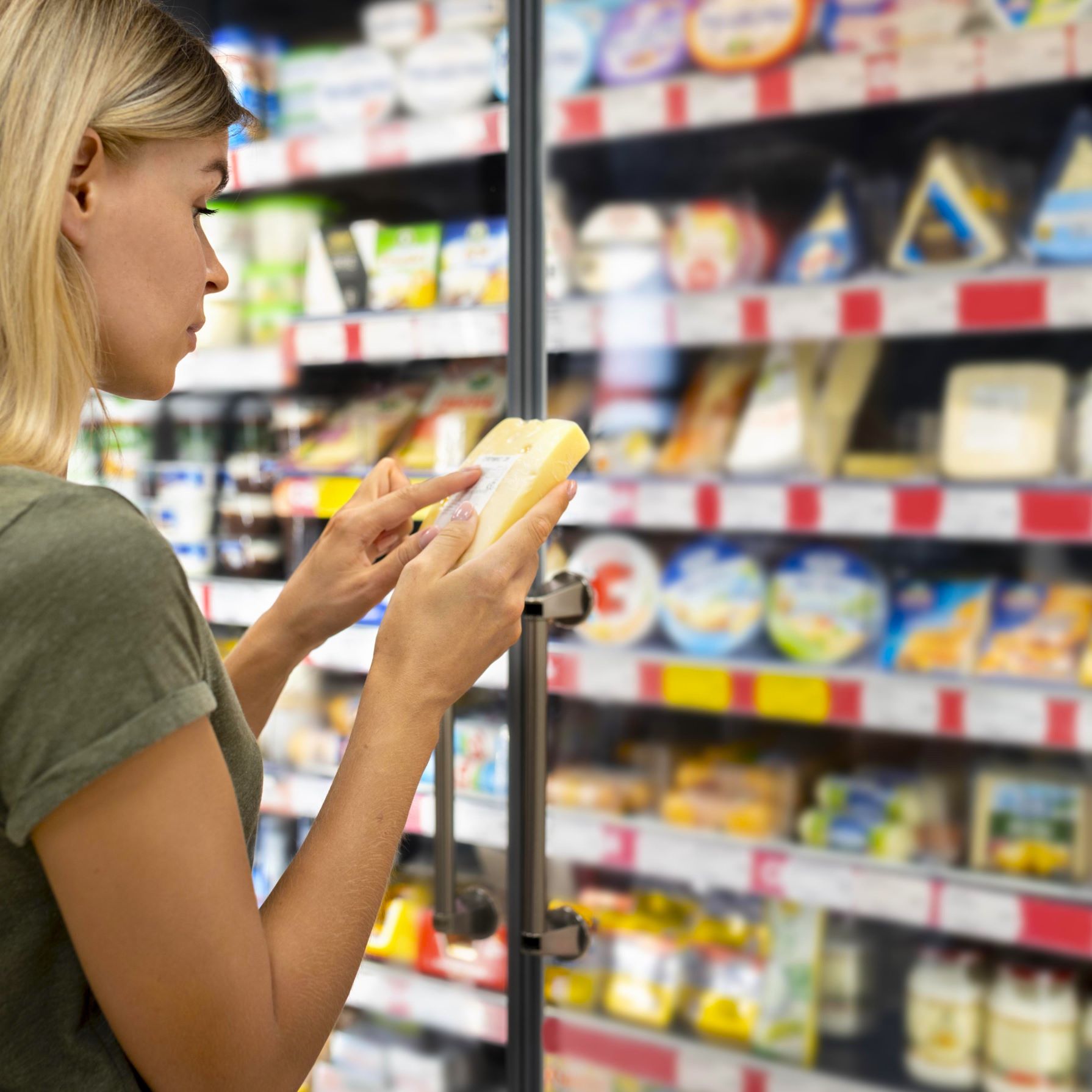
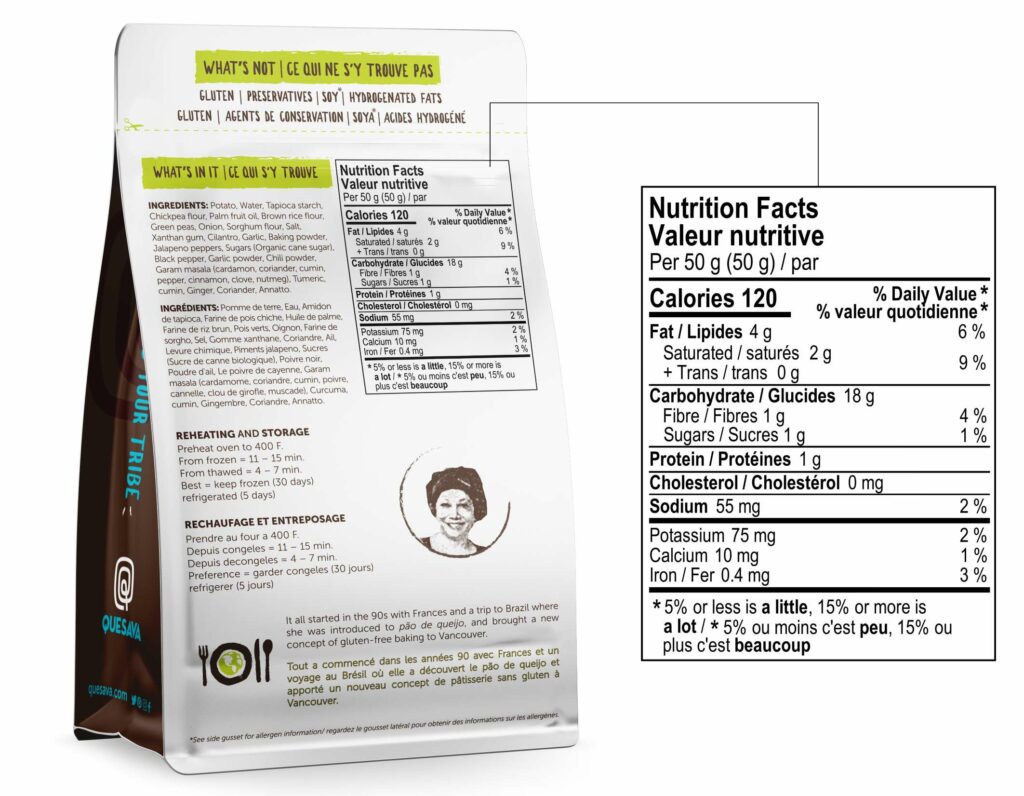
1. Nutrition facts table
The Nutrition Facts table is a crucial part of food packaging, providing consumers with detailed information about the nutritional content of your product. In Canada, the Nutrition Facts table must meet the following criteria:
- Format and Layout: It must follow the standardized format as prescribed by Health Canada, including fonts and layout. There are specific formats based on the application.
- Content: Key nutrients such as calories, fat, sodium, carbohydrates, fiber, sugars, and protein must be listed per serving size, along with % Daily Value (% DV) where applicable.
How to Obtain: You can generate the Nutrition Facts table through certified software or by working with a lab that specializes in nutritional analysis. Ensure that all the information is accurate and complies with the latest regulations.
2. Ingredients list
The ingredients list provides a detailed account of all the ingredients in your product, ordered by weight from most to least. Here’s what you need to include:
- All Ingredients: List all ingredients, including any additives or preservatives.
- Allergen Declarations: Clearly identify any allergens present in the product (e.g., peanuts, milk, soy) in bold or separate sections to comply with allergen labeling regulations.
How to Create: Develop your ingredients list based on your product formulation. Ensure that it reflects the actual content and adheres to regulatory requirements for terminology and order. These will need to be updated with any changes to product formulations and should adhere to the guidelines set out by health Canada.
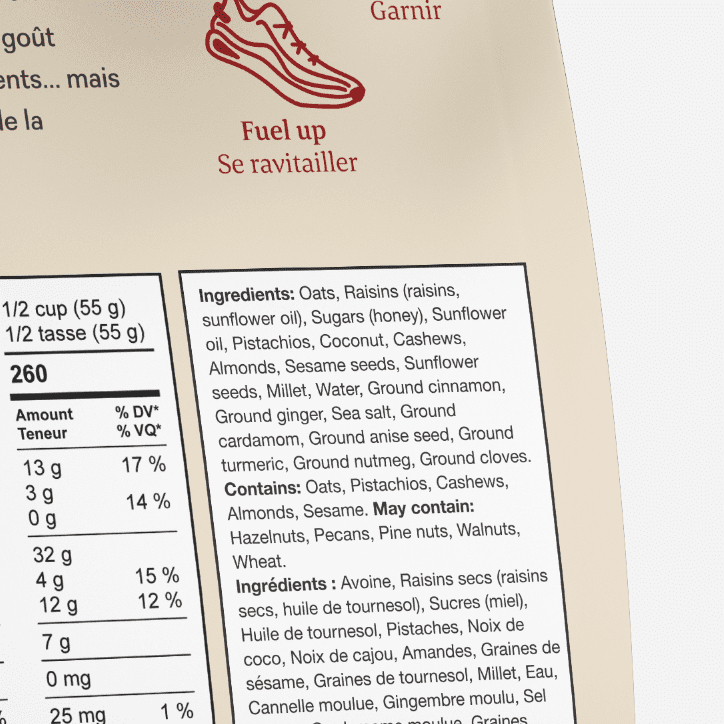

3. UPC code (Universal Product Code)
A UPC code is essential for product identification and retail scanning. It is a barcode that uniquely identifies your product and helps with inventory management and sales tracking.
- Format: The UPC code must be clearly visible and scannable. It’s often placed on the back or bottom of the packaging, but this is not a requirement.
- Registration: You need to register for a UPC code through GS1 Canada, which will issue a unique code for your product.
How to Obtain: Register with GS1 Canada to obtain your UPC codes. Once you have the codes, you can incorporate them into your packaging design.
4. Bilingual labeling
In Canada, all mandatory information on food packaging must be presented in both English and French. This includes:
- Product Name
- Ingredients List
- Nutrition Facts Table
- Allergen Statements
How to Comply: Consider working with professional translators familiar with food industry terminology to translate all relevant information accurately into French.
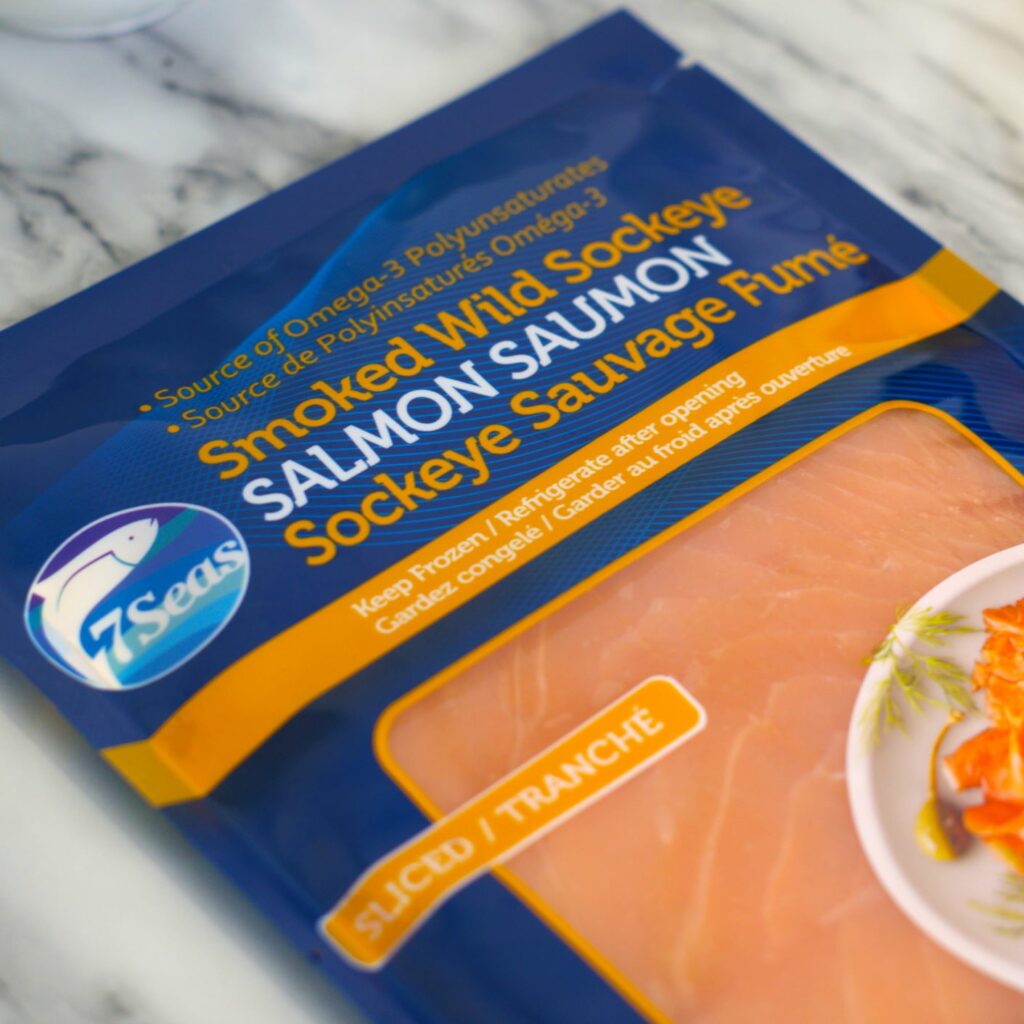
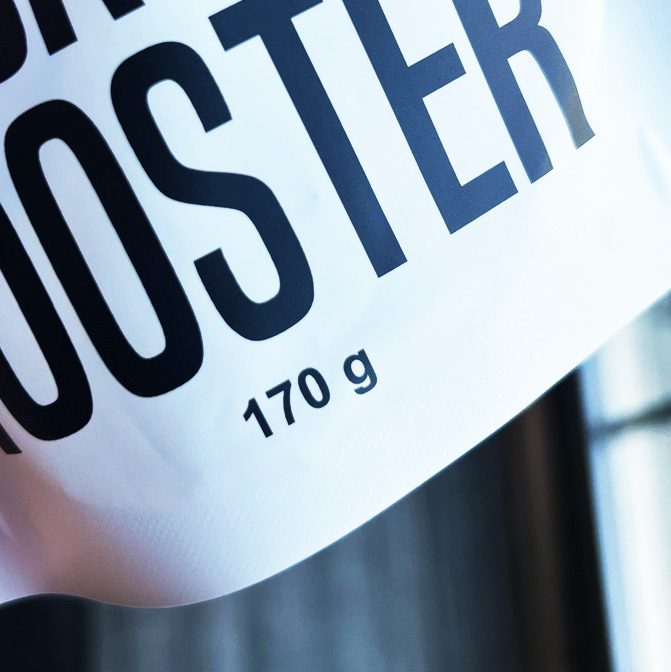
5. Net quantity
The net quantity of the product inside the package must be declared on the packaging in metric units (grams or milliliters).
- Placement: Must be located on the principal display panel (PDP).
- Size: The text size should be proportional to the package size as indicated by Health Canada and easily readable.
How to Display: Calculate the net quantity based on the product content and ensure accurate representation on the packaging.
6. Date Marking
In Canada, date marking is required for products with a shelf life of 90 days or less. This includes:
- “Best Before” Date: Indicates the period during which the product is expected to remain in peak condition. Be sure to use consistent date formatting.
- Storage Instructions: Include any necessary instructions to maintain product quality If they differ from normal room temperature (e.g., “Keep Refrigerated”).
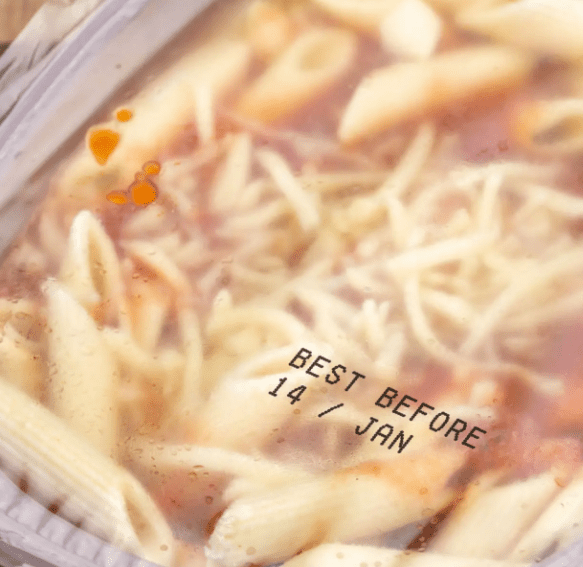
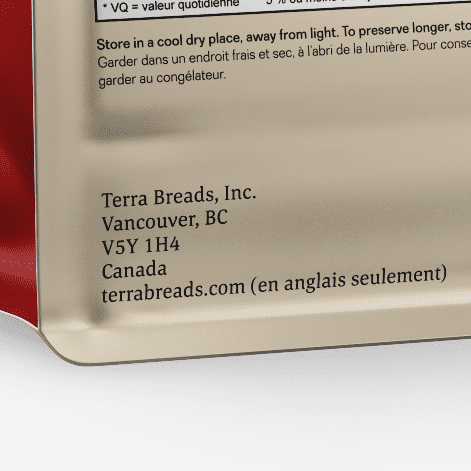
7. Company Information
Your packaging must include the name and primary address of the person or person who the package is manufactured, prepared, produced, stored, packaged, or labelled for. This provides consumers and regulators with contact information for inquiries or complaints.
- Placement: This can be anywhere on the packaging apart from the bottom.
8. Other considerations
Health Canada has limitations on claims and statements for marketing, food-specific labelling requirements, and other requirements. There are also limitations and exceptions to the rules listed above. Always consult with an expert or the Health Canada website when designing packaging for retail applications.
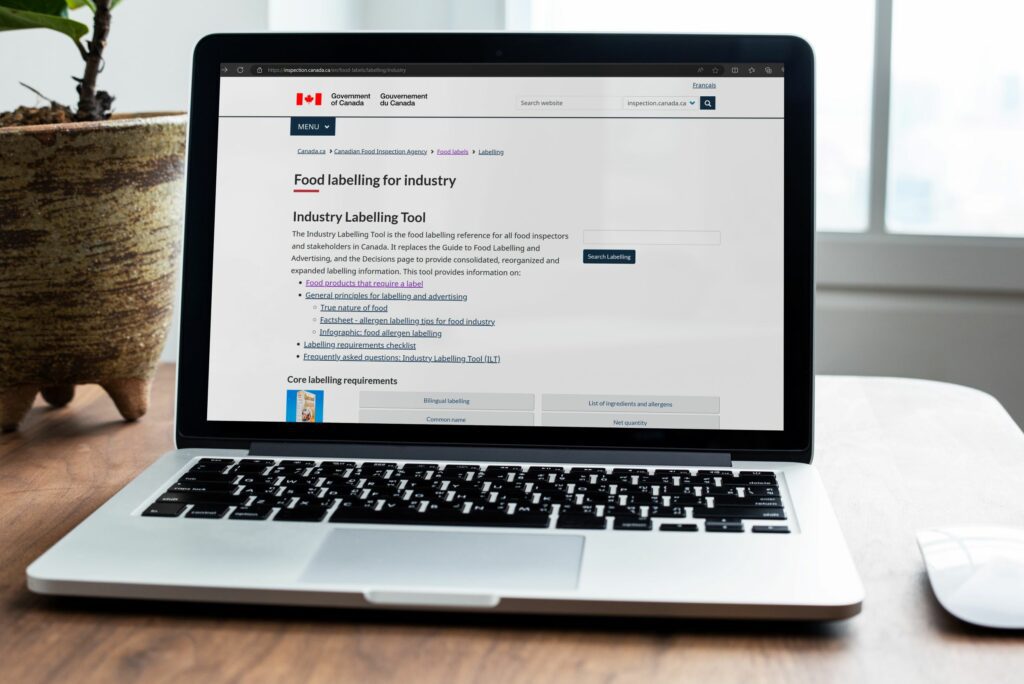

Wrapping up
Getting your food product retail-ready in Canada involves meticulous attention to detail and strict adherence to regulatory requirements. At FoodPak, we’re committed to helping you navigate this complex process.
Share this post
Have a project in mind?
Get in touch today for a custom quote.

